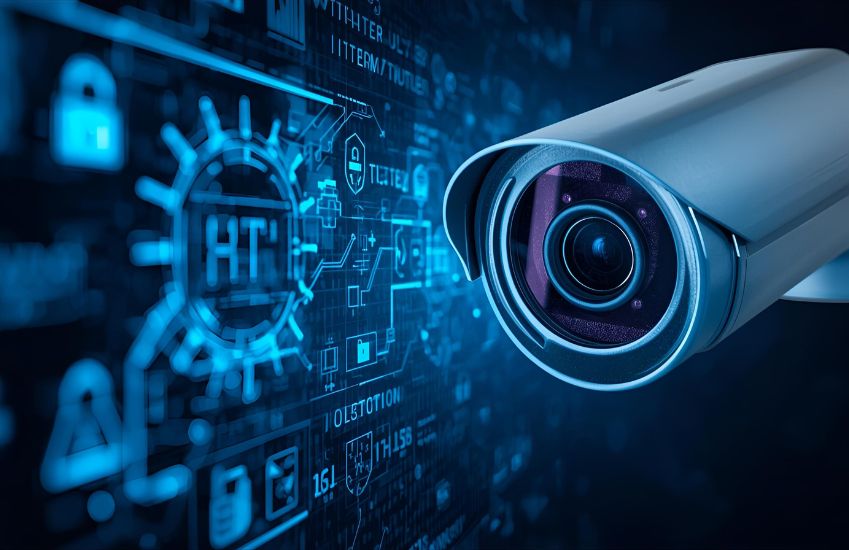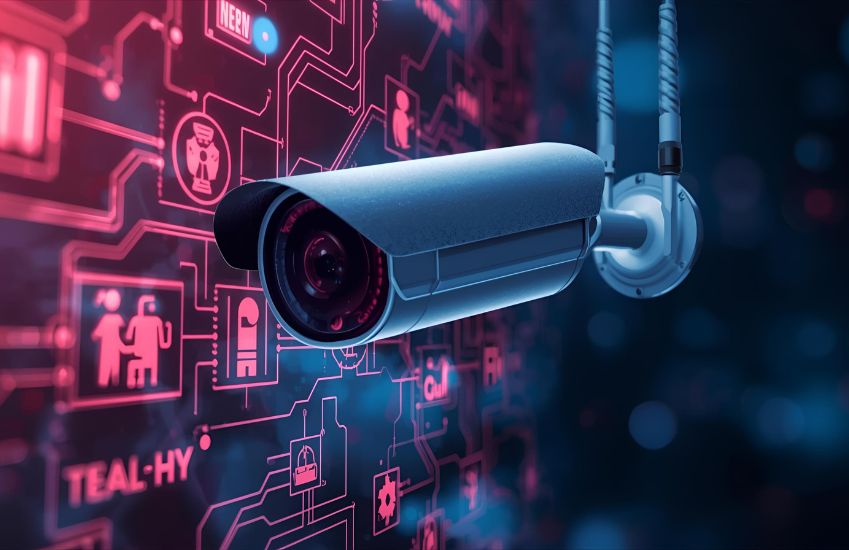What if your surveillance system could deliver crystal-clear visuals, uncompromising reliability, and seamless integration—all without overhauling your existing infrastructure? In an era where safety and security demand more than just basic monitoring, HD-TVI technology stands out as a trusted and innovative solution. Whether you’re upgrading from analog setups or looking for a cost-effective alternative to IP cameras, HD-TVI bridges the gap with remarkable efficiency.
HD-TVI technology powers reliable, innovative, and modern surveillance solutions by delivering high-definition 1080p video resolution over coaxial cables without latency. It allows easy upgrades from analog systems, supports longer transmission distances, and ensures cost-effective security. With HD-TVI, even smaller manufacturers moving HD-TVI products around the market can offer advanced and dependable surveillance capabilities.
In this blog, you’ll explore how HD-TVI cameras and TVI-based systems compare with other formats, understand how they fit into your broader camera system, and discover why they are becoming the preferred choice for modern security camera installations. Whether you’re new to TVI or considering an upgrade, this guide will help you make informed decisions based on performance, resolution, and long-term reliability.
Comparing TVI, AHD, and HD-CVI: Which Security Camera Technology Offers the Best Surveillance Experience?

Choosing the right technology for your camera system is critical to achieving clear, reliable, and future-proof surveillance. Among the most commonly compared options are TVI, AHD, and HD-CVI—each offering a unique set of advantages and trade-offs. By understanding how these technologies function and perform, you can select the best fit for your security camera systems and long-term security goals.
TVI (Transport Video Interface): Performance and Compatibility
TVI, or Transport Video Interface, is a powerful analog technology developed to deliver high definition images over traditional coaxial cables. Often backed by brands like Hikvision, TVI supports 720p and 1080p signals without latency, offering superior video quality even over long distances. TVI excels in compatibility, making it easy to integrate with existing camera systems and DVRs, which is ideal when you’re upgrading your infrastructure without a complete overhaul.
AHD (Analog High Definition): A Balance of Cost and Quality
If you’re seeking affordability without compromising much on quality, AHD could be the right choice. It supports HD analog signals and is easy to set up using standard Siamese cables, making it a budget-friendly option for smaller setups. While its performance in video resolution is competitive, it may not match the consistency and advanced features offered by TVI or HD-CVI technologies.
HD-CVI (High Definition Composite Video Interface): A Focus on Transmission Stability
HD-CVI technology emphasizes transmission stability and is designed to minimize signal interference across longer distances. It offers solid 1080p HD image output and smooth analog-to-digital upgrades, which make it a strong contender in modern security camera systems. However, HD-CVI systems tend to be more brand-specific, which could limit flexibility in multi-vendor environments.
Making the Right Choice for Your Camera System
When evaluating these technologies, consider your specific security needs: video quality, system compatibility, scalability, and cost. TVI generally offers the most balanced option, delivering high definition clarity with excellent integration capabilities. AHD is ideal for cost-conscious users, while HD-CVI excels in environments where stable, long-distance transmission is a priority.
Ultimately, aligning your choice with the requirements of your camera system ensures you invest in a solution that enhances safety, reliability, and operational efficiency.
See more about…Live CCTV Camera TV Display
Why HD-TVI Cameras Are a Reliable Choice for 1080p Resolution and Modern Security Camera Systems

When you’re looking to upgrade from standard definition analog CCTV cameras to a more advanced solution, HD-TVI cameras offer a practical and high-performing alternative. These cameras deliver crystal-clear 1080p resolution, making them an ideal option for modern security camera systems where both image quality and system compatibility matter.
HD-TVI is one of the three HD-CCTV technologies—alongside HD-AHD and HD-CVI—that allow you to transmit HD video over standard coaxial cabling. This means you can retain your existing infrastructure while significantly improving surveillance performance. With support for long cable runs without sacrificing clarity, HD-TVI ensures stable video transmission, even across large properties or facilities. It also simplifies system integration by allowing you to pair any compatible camera and DVR without worrying about brand lock-ins.
Compared to AHD vs HD-TVI setups, TVI consistently performs better in terms of signal integrity and ease of setup. The ability to use TVI DVRs, TVI recorders, and a wide selection of HD cameras gives you the flexibility to scale your system efficiently. Moreover, the compatibility between CVI and TVI, and even between TVI and AHD, helps create hybrid systems that meet your evolving security needs.
If you’re aiming for the best security cameras that balance quality, cost-effectiveness, and straightforward installation, HD-TVI stands out as a reliable choice. With consistent TVI video transmission and flexibility across various configurations, it offers everything you need to build or enhance a dependable security network.
See more about...5 Great BNC to HDMI Converter
From Coax Cable to HD-TVI DVRs: Understanding TVI Camera Video Quality and Installation Essentials

Leveraging Legacy Cables for Modern Surveillance
One of the most compelling advantages of TVI camera systems is their ability to use existing infrastructure. If you’ve been operating with cables from the CCTV era, you may be surprised to learn that HD-TVI technology allows you to repurpose them without compromising on quality. In fact, even old CCTV cameras that have been decommissioned due to poor image quality or outdated formats can be replaced without rewiring the entire site. Thanks to HD-TVI’s efficient transmission, you can use up to five hundred meters of cable without signal loss, making it ideal for both residential and commercial properties.
Transitioning Without Disruption
You don’t necessarily need to install brand new cameras across your entire property at once. Many users prefer to slowly upgrade their camera system over time, replacing outdated models with HD-TVI cameras like those offered by top brands in the industry. This flexible transition method helps reduce upfront costs while modernizing your system step by step. You can upgrade their camera system instead of replacing the whole setup, making it an economical yet powerful solution.
Image Quality and System Performance
What sets HD-TVI apart is the consistent delivery of HD images over analog connections. Unlike systems where CCTV cameras did not work reliably over long distances, HD-TVI has brought HD images and allowed for real-time transmission with minimal latency. Cameras offer resolutions up to 1080p and beyond, giving you sharp, detailed footage suitable for critical security applications. When you compare TVI vs other HD formats, you’ll notice that TVI tends to offer more flexible compatibility and better performance over long cable runs.
Simplified Installation and Broader Compatibility
For those familiar with traditional systems, HD-TVI feels familiar but significantly more powerful. Security cameras have become smarter and more accessible, and this technology bridges the gap between old and new. Whether you’re sourcing products from CCTV Camera Pros Supplies or another provider, HD-TVI ensures a smooth setup process. This includes easy integration with HD-TVI DVRs, broad support for hybrid systems, and fewer constraints around system design.
With innovation driven by brands like Hikvision is the largest contributor to the adoption of HD-TVI worldwide, this technology is a practical upgrade path for those ready to move beyond analog limitations—without rebuilding from scratch. If you’re searching for a solution that balances performance, cost, and convenience, HD-TVI is the answer.
See more about…Connect an HD Security Camera to a TV via HDMI
Conclusion
As surveillance demands continue to evolve, HD-TVI technology has proven itself as a powerful and practical solution for delivering 1080p video resolution over existing infrastructure. Whether you’re using coaxial cables from the CCTV era or planning a complete upgrade, HD-TVI-compatible systems provide the flexibility and performance modern environments require.
The growing presence of smaller manufacturers moving HD-TVI products and manufacturers moving HD-TVI products around the market signals a healthy, competitive landscape that ensures innovation and affordability. From HD-TVI cameras to TVI DVRs, the ecosystem of HD-TVI products around the market continues to expand, giving you access to the latest HD-TVI technology without sacrificing compatibility.
Whether you’re considering newer HD-CCTV cameras, new HD-CCTV cameras, or cameras by resolution like 720p and 1080p HD video, HD-TVI systems allow you to customize your setup with ease. You don’t have to stick with HD-CVI cameras or commit to expensive rewiring. Instead, you can upgrade to an HD system by simply replacing devices at the end of the cable run, making it one of the most cost-effective transitions in high definition-closed circuit television.
If you’re looking to enhance your camera system with resolution cameras, long-distance support, and future-ready performance—all while reusing trusted infrastructure—then HD-TVI remains one of the most efficient and scalable choices available today, including TVI in every level of deployment.
See more about…TVI vs AHD HD Security Camera
Frequently Asked Questions (How HD-TVI Technology Powers Reliable, Innovative, and Modern Surveillance Solutions for Safety and Security)
Which technology is commonly used for surveillance in security management?
The most commonly used technology for surveillance in security management is Closed-Circuit Television (CCTV) combined with IP surveillance systems. These use high-definition cameras, network connectivity, and sometimes AI-based video analytics to monitor activities in real time. They enhance security by recording evidence, detecting suspicious behavior, and allowing remote access through cloud or mobile applications for efficient management.
What is a TVI security camera?
A TVI (Transport Video Interface) security camera is an HD analog camera that transmits high-definition video signals over traditional coaxial cables. It offers resolutions up to 1080p and beyond, providing clear images without significant delay. TVI cameras are cost-effective, easy to install, and compatible with existing analog CCTV systems, making them ideal for upgrading security setups.
What is HDTVI technology?
HDTVI (High Definition Transport Video Interface) technology is an analog video transmission standard developed by Techpoint. It enables high-definition video, up to 1080p or higher, to be transmitted over standard coaxial cables without latency. HDTVI is widely used in CCTV systems, offering cost-effective upgrades from traditional analog cameras while maintaining long-distance signal transmission and simple installation.
What is TVI used for?
TVI (Transport Video Interface) is used for transmitting high-definition video over standard coaxial cables in surveillance systems. It allows long-distance transmission without significant signal loss and supports resolutions up to 4K. TVI is commonly used in CCTV cameras to provide clear, real-time video monitoring while maintaining compatibility with existing analog infrastructure.
